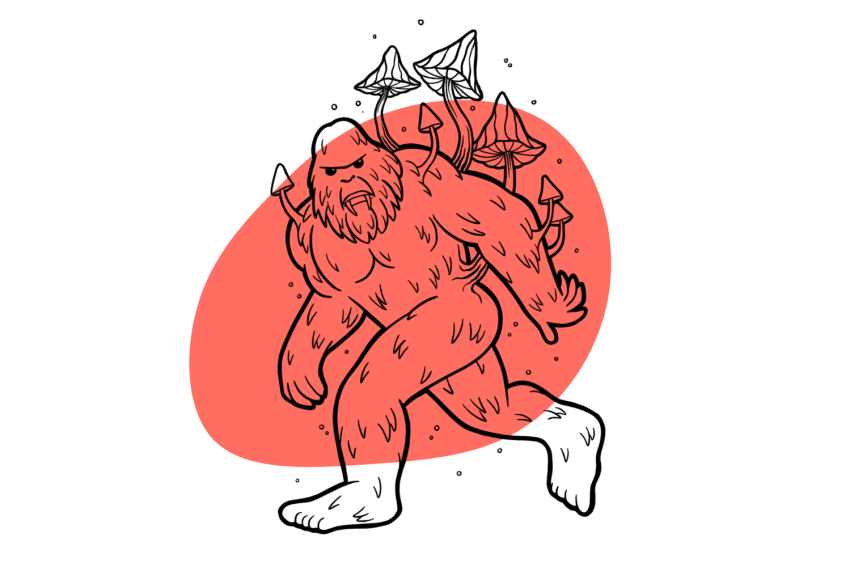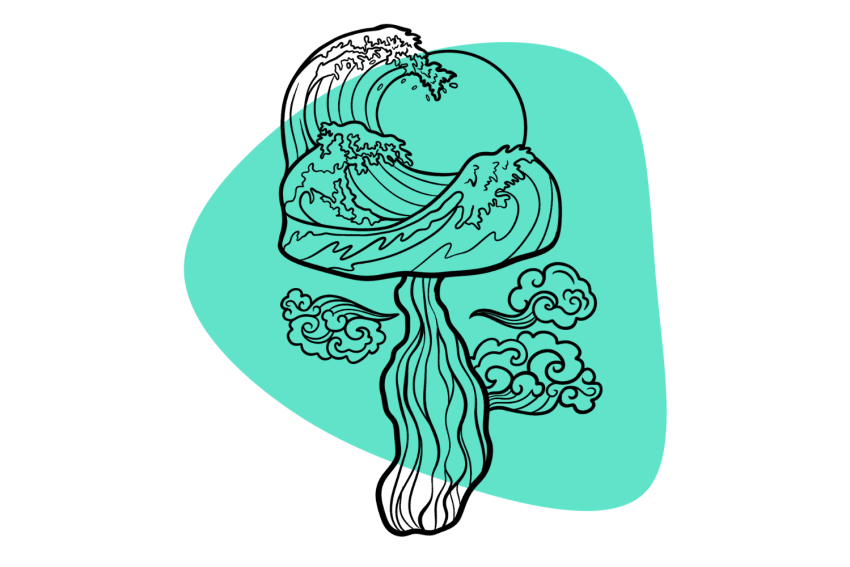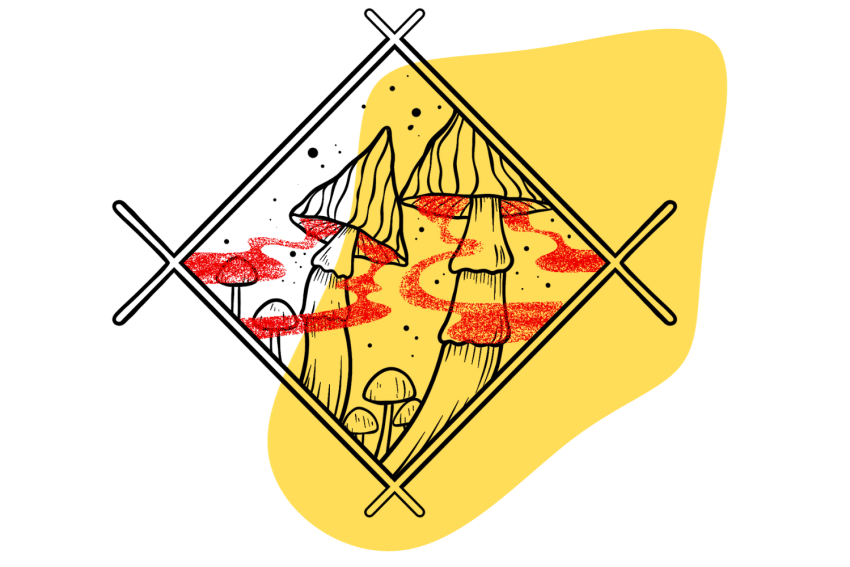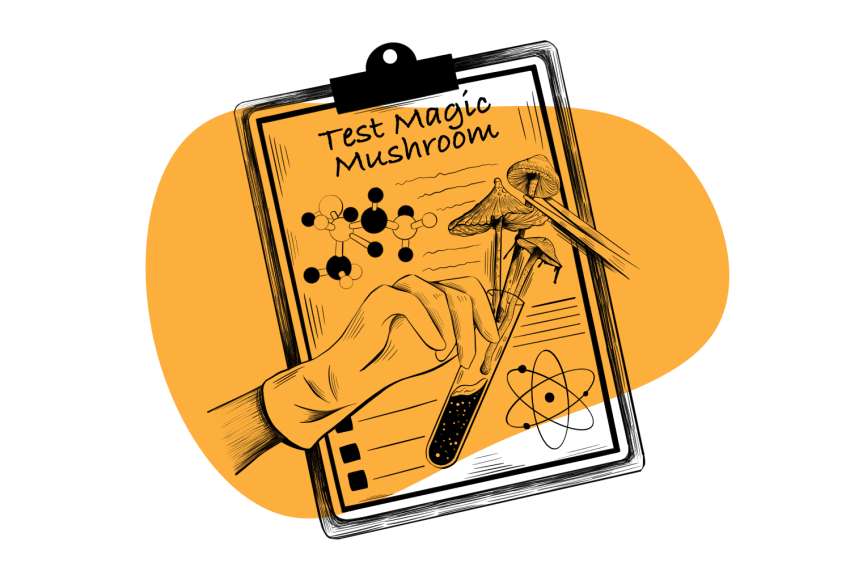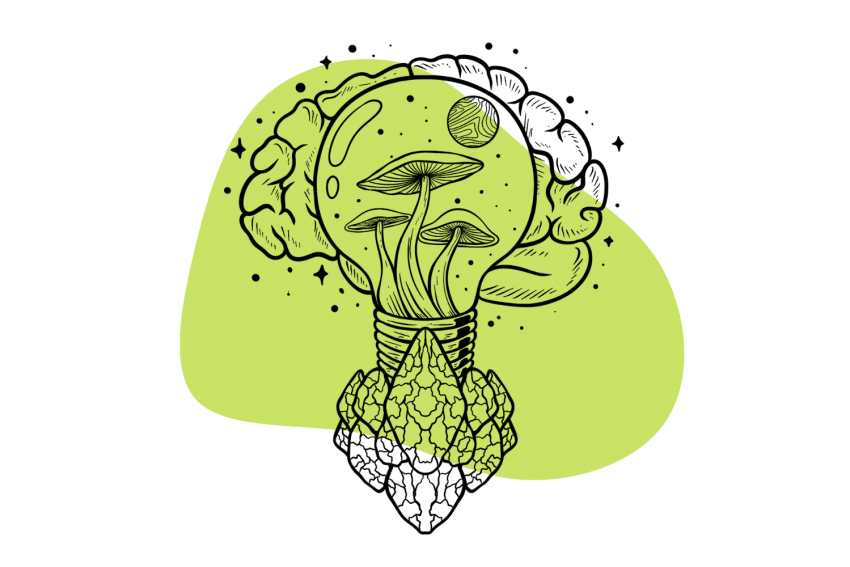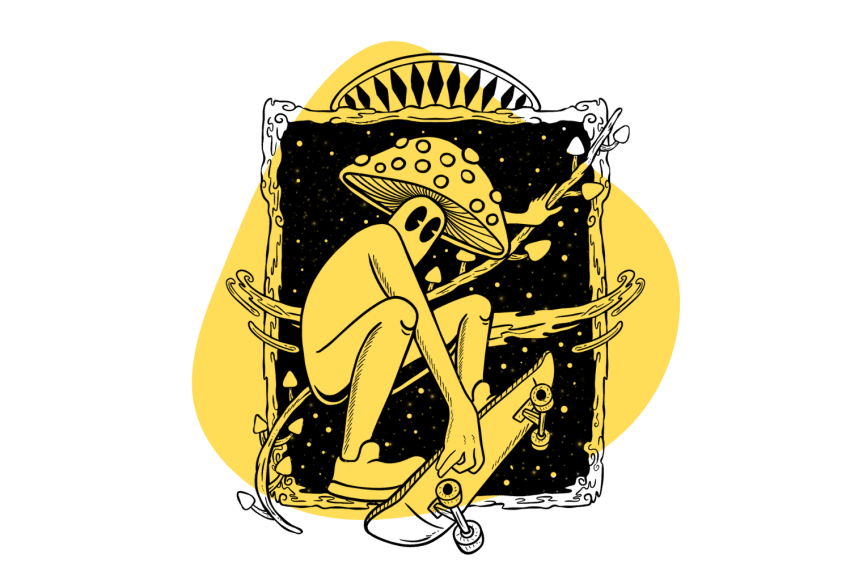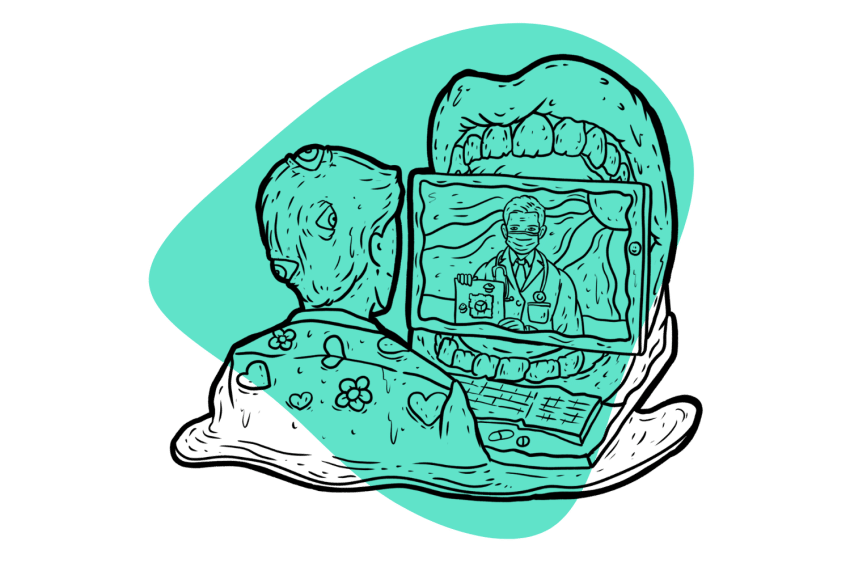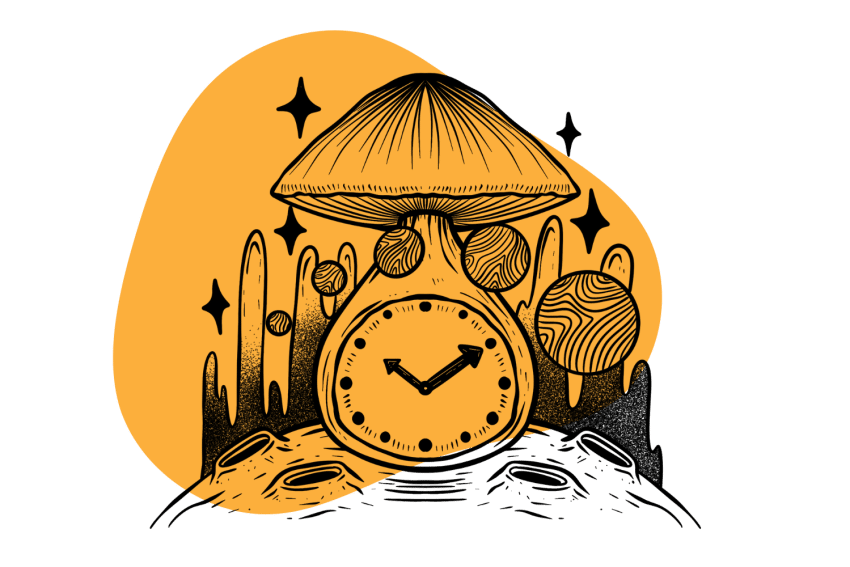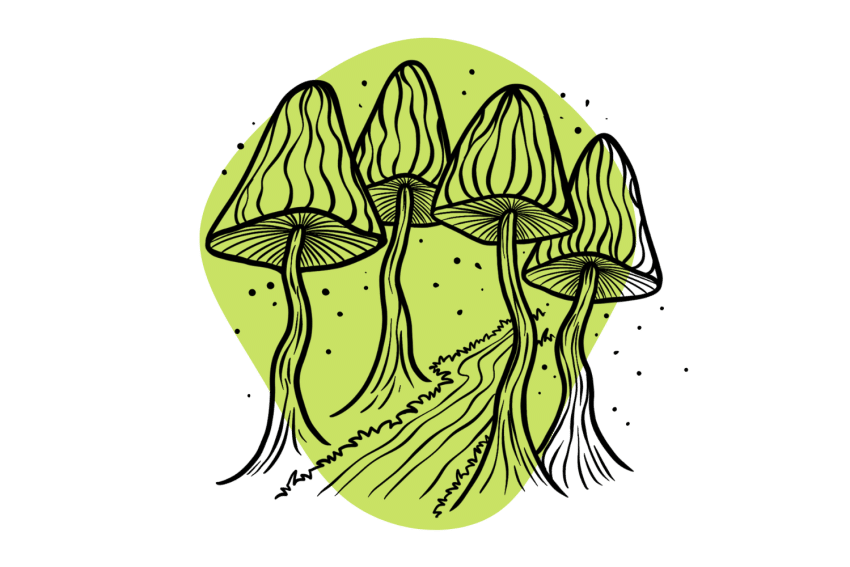This Is Your Brain on Drugs: The Real Impact of Magic Mushrooms
Magic mushrooms primarily target the 5HT2A receptors in the brain to produce their psychedelic effects… but they also do a heck of a lot more than this. Let’s explore.
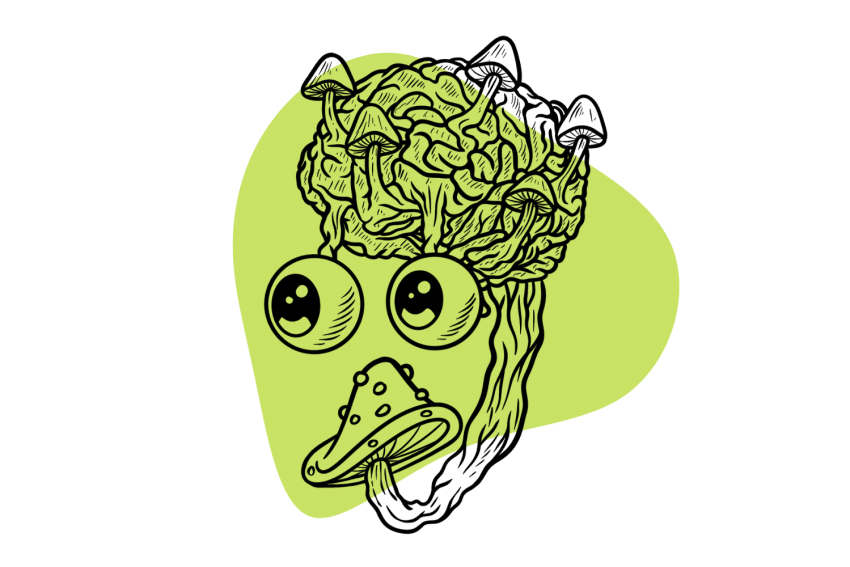
Psilocybin — the psychedelic component in magic mushrooms — is a tryptamine compound that acts on serotonin receptors in the brain.
Psilocybin is converted to psilocin in the liver. The psilocin is then transported to the brain through the bloodstream, where it binds to the 5-HT2A serotonin receptors and interacts with the brain’s default mode network. It’s these actions in the brain that produce the psychedelic effects associated with magic mushrooms.
The actions of magic mushrooms on the brain can affect behavior and mental stability and potentially promote neurogenesis and neuroplasticity.
In this article, we’ll look at:
- What magic mushrooms feel like
- How magic mushrooms work & how they act on the brain
- The positive effects of psilocybin on the brain
- The negative effects of psilocybin on the brain
I’ll also be answering some frequently asked questions about magic mushrooms and their psychedelic components.
What Do Magic Mushrooms Feel Like?
Magic mushrooms are a group of over 180 species of fungi that produce psilocybin — a psychedelic compound that induces hallucinatory effects.
When ingested, psilocybin-containing mushrooms can induce a wide range of sensory, spiritual, emotional, and cognitive experiences. These effects vary from person to person depending on factors such as dosage, body weight, individual sensitivity, set and setting (mindset and environment), and tolerance.
The effects of magic mushrooms begin 20 minutes to one hour after consumption, depending on how they were prepared and consumed. As the individual “comes up,” they’ll experience waves of energy and euphoria flowing through their body. They may also experience butterflies in their stomachs and slight feelings of nausea.
The psychedelic effects are strongest as the trip “peaks” (1.5 to 3 hours after consumption). Feelings of euphoria are more pronounced, and visual distortions begin. The user may experience both open and closed-eye hallucinations and audible distortions as they sink away from reality.
The peak of the experience may “plateau” for a couple of hours. During this time, the psychedelic effects remain at a stable level before they subside as the individual “comes down” from the trip. During the come-down, the psychedelic effects dissipate in waves, gradually getting weaker and weaker until they cease entirely.
How Do Magic Mushrooms Work?
Magic mushrooms work primarily through the active tryptamine “psilocybin,” but a range of other tryptamines may also contribute to the overall experience through a sort of “entourage effect.”
When magic mushrooms are consumed, they’re broken down in the stomach, and the psilocybin is released into the liver, where it’s metabolized into psilocin — the readily-active hallucinogenic metabolite of psilocybin. As the psilocin is absorbed, it influences several actions in the brain that are responsible for the psychedelic effects experienced during a trip.
How Does Psilocin Act On the Brain?
Once the psilocybin is metabolized in the liver, the psilocin is released into the bloodstream, which serves as a “transportation system,” taking psilocin to the brain.
Psilocin closely resembles serotonin — a neurotransmitter that regulates mood, perception, and cognitive processes in the brain. When the psilocin reaches the brain, it binds to serotonin receptors, most notably the 5-HT2A receptors [1]. This binding disrupts the normal flow of serotonin, resulting in significant changes in perception and cognition.
It’s this relationship with the 5-HT2A receptors that’s believed to be responsible for many of the psychedelic effects magic mushrooms produce. This action may make colors more vibrant, cause objects to seem to shift and transform, and distort sensory experiences.
Psilocin also interacts with the brain’s “default mode network” (DMN) — a network of interconnected brain regions responsible for reflective and creative thinking. The influence of psilocin and other psychedelics on the DMN may be responsible for the temporary loss of self and the ego dissolution that occurs during an intense psychedelic trip [2].
The interaction with the DMN may also impact the user’s sense of time — minutes feel like hours while hours seemingly pass in minutes.
The emotional intensity of magic mushrooms may also stem from psilocin’s interaction with the DMN and alterations in serotonin activity. It’s common for people to experience heightened emotional states during a magic mushroom trip — feeling more connected with their own emotions and those of others around them.
After high doses of psilocybin, the user may experience increased emotional intensity for up to a month after consumption, as some studies suggest [3]. Many researchers speculate that it’s this influence that makes magic mushrooms and other psychedelics an effective treatment for a range of mental disorders such as anxiety and depression.
In summary, magic mushrooms induce psychedelic effects primarily through the action of psilocin on the brain’s serotonin receptors and Default Mode Network. A range of other active tryptamines found in magic mushrooms may also impact the psychedelic experience, but further research is needed to determine exactly what roles they play.
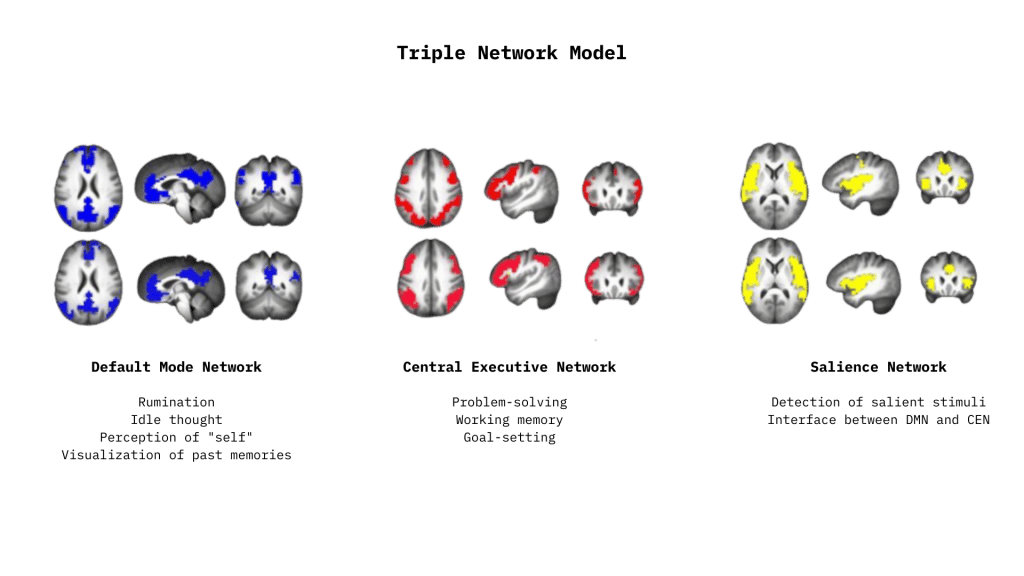
The Positive Effects of Psilocybin On the Brain
Psilocybin and its active metabolite, psilocin, have been the subject of scientific research regarding their potential positive effects on the brain. While further research is required to fully understand the mechanisms of psilocybin-producing fungi, some of their potential positive effects include:
1. Enhanced Cognition & Creativity
Studies show that sub-perceptual doses (microdoses) of psilocybin can enhance cognition and creativity [4]. However, macrodoses or higher often impair cognitive productivity, focus, and creativity.
It’s believed that psilocybin enhances creativity by influencing the brain’s neural pathways. Psilocybin’s action on serotonin receptors and the resulting change in typical brain functioning are likely responsible for changes in cognition and creativity when consumed in low doses.
2. Enhanced Mindfulness
Psilocybin can lead to an increased sense of mindfulness and self-awareness. During a psychedelic trip or after a period of macro or microdosing, individuals may feel more in tune with their thoughts and emotions — this can promote personal growth and self-reflection [5].
Psilocybin’s impact on mindfulness and self-awareness is due to how it reduces activity in the brain’s Default Mode Network (DMN). The DMN is associated with self-referential thoughts and “mind-wandering.” By decreasing activity in the DMN, psilocybin may allow the individual to become more “present” and in tune with their thoughts and emotions.
3. Neuroplasticity
Research suggests that psilocybin and other serotonergic psychedelics may promote neuroplasticity — the brain’s ability to form and reorganize synaptic connections [6]. Changes in neuronal structure and an increase in synapse function may help people overcome neuropsychiatric diseases, including anxiety and depression disorders.
Neuroplasticity from serotonergic psychedelics appears to stem from stimulation of the TrkB, mTOR, and 5-HT2A signaling pathways in the brain. Stimulation of these pathways could explain the clinical effectiveness of psilocybin in the treatment of PTSD, addiction recovery, and other mental disorders.
4. Neurogenesis
Some studies indicate that psilocybin may stimulate the growth of new neurons in the brain — a process known as “neurogenesis.” This is especially beneficial for treating conditions involving cognitive decline and mood instability.
It’s believed that psilocybin’s influence on serotonin receptors may indirectly support neurogenesis. Paul Stamets discovered that a combination of psilocybin, Lion’s Mane, and niacin (vitamin B3) can create new neurons and neural pathways and repair existing neurological damage in the brain.
5. Emotional Processing
Psilocybin — especially when used in psychedelic-assisted psychotherapy — has shown promise in helping individuals process and confront difficult emotions, such as trauma, depression, and anxiety. Serotonergic psychedelics appear to facilitate a more adaptive and healthier emotional response and, when used in the right environment, can be beneficial in the treatment of several mental disorders.
Psilocybin’s influence on the Default Mode Network and the amygdala region of the brain is believed to be responsible for the substance’s ability to regulate emotional responses. While under the influence of psilocybin, individuals can process and confront difficult emotions that may be causing them problems in life.
Psilocybin-assisted therapy has proved particularly beneficial for people with post-traumatic stress disorder (PTSD). Studies suggest that the combination of psilocybin’s ability to promote emotional processing and neuroplasticity is why it’s so effective in the treatment of PTSD [7].
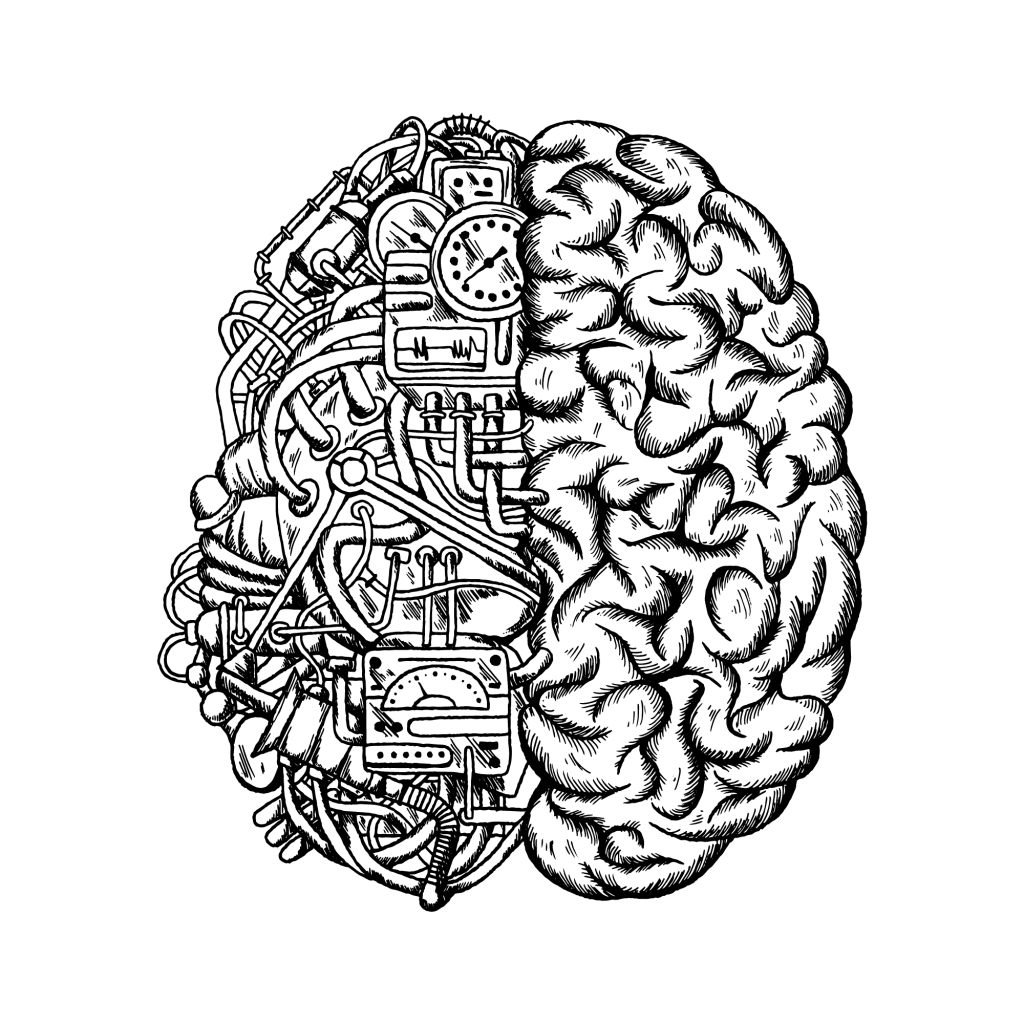
The Negative Effects of Psilocybin On the Brain
As with any substance, it’s not all positive. Magic mushrooms can negatively impact the brain in certain ways. Some may interpret these effects as “positive” by some but “negative” by others.
Here’s how psilocybin may produce negative effects on the brain:
1. Psychological Distress
Psilocybin can induce psychological distress in some individuals, primarily through its effects on mood-regulating neurotransmitters, especially the 5-HT2A serotonin receptors. The compound’s disruption of serotonin signaling can lead to temporary imbalances in mood, which can cause feelings of anxiety, agitation, or even mild depression during a psychedelic trip.
These feelings are often an indicator of an underlying emotional issue. Some would argue that “negative” psychological responses are beneficial during a psilocybin trip if addressed correctly in combination with therapy. However, for the casual magic mushroom user, these responses may cause damaging psychological distress.
2. Paranoia & Fear
Psilocybin’s impact on the brain’s serotonin receptors can result in heightened anxiety and paranoia, especially if the individual’s set (mindset) and setting (environment they’re in during a trip) aren’t quite right.
During a psilocybin trip, users become overly sensitive to their surroundings. If they’re in a dark place mentally or are surrounded by negative “triggers,” they may develop irrational fears and paranoia. This can be challenging for the individual during the psychedelic experience, but the feelings usually dissipate once they come down.
3. Hallucinations
Psilocybin induces hallucinations by interacting with the brain’s serotonin receptors and Default Mode Network. These hallucinations are usually why people consume psilocybin-containing mushrooms. However, these visual, auditory, and sensory experiences can be disorienting and distressing for some.
4. Impaired Judgement & Coordination
Psilocybin can impair judgment, decision-making, and coordination due to its influence on the prefrontal cortex and other higher-order brain functions. Under the influence of magic mushrooms, individuals may struggle to make rational choices, which can lead to risky behavior that could be detrimental to their physical and mental well-being.
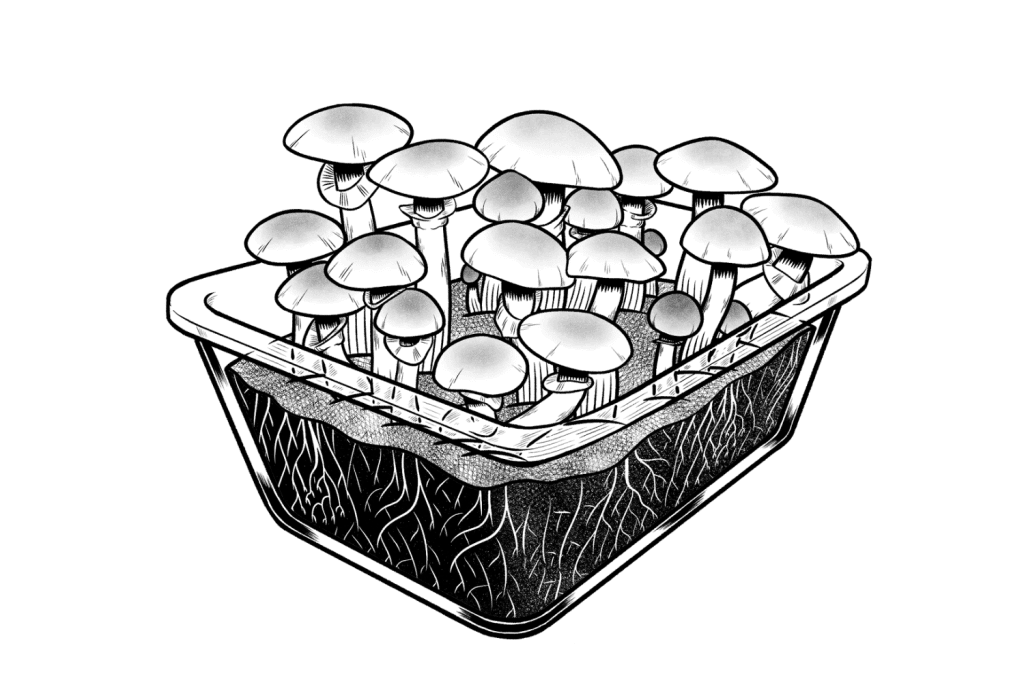
Frequently Asked Questions
Here are the answers to some questions you may have that we didn’t cover in this article.
1. What is the history of the use of magic mushrooms?
Magic mushrooms have been used for millennia by various cultures across the globe. There’s evidence of magic mushroom use dating back over 12,000 years. The “Bradshaw Rock Art” paintings discovered in the Kimberly region of Australia depict “mushroom heads” — symbols that many scientists believe resemble magic mushrooms [8].
However, their use can be more accurately dated back to the Mayan and Aztec cultures of present-day Mexico and Central America. The Mayans’ most famous “psychedelic relics” are the mushroom stones — a series of phallic-shaped stone carvings that resemble magic mushroom spirits. The mushroom stones are believed to have played a part in religious ceremonies where psychedelic fungi would have been consumed to “contact the gods” [9].
The Aztecs — a later Mesoamerican civilization — also used magic mushrooms in religious ceremonies. They called the sacred psychedelic fungi “teonanácatl,” meaning Flesh of the Gods. The Florentine Codex contains several references to the use of psychedelic plants and fungi, including teonanácatl, which is believed to be Psilocybe mexicana [10].
Learn more about magic mushroom history: Who Discovered Magic Mushrooms.
2. Are magic mushrooms addictive?
Any substance can be habit-forming and addictive for some people. However, psilocybin isn’t considered an “addictive substance” and poses little risk for abuse.
Magic mushrooms aren’t physically addictive in the same way that opioids and nicotine are — they don’t lead to physical dependence or induce withdrawal symptoms when the user ceases consumption.
Psilocybin doesn’t strongly activate the brain’s reward system, which is a key factor in the development of dependence and addiction. Substances such as nicotine, cocaine, benzodiazepines, and opioids release a surge of dopamine, which activates this system — essentially providing the brain with “10 times its natural reward.”
The brain remembers this surge and associates the reward with the substance, telling the body it needs more.
Psilocybin doesn’t interact with the brain’s reward system in this sense, so it’s nowhere near as addictive as the substances listed above. After using magic mushrooms, the body doesn’t crave more to feel rewarded.
In fact, research shows magic mushrooms can help break addiction. Find out more by reading Breaking Free From Addiction: The Promising Effects of Magic Mushrooms.
3. How can you reduce the risk of a “bad trip” on shrooms?
The prospect of a “bad trip” is enough to put people off and not take the risk of taking shrooms. Psychedelics have the ability to amplify what’s inside your head — sometimes, this can be frightening, especially if you’re going through a mentally challenging time in your life.
I believe there’s no such thing as a bad trip — even if the experience seems scary. There’s always something to learn from a psilocybin trip, and if the experience takes a darker turn, it’s usually telling you that there are problems in your life to address.
With that said, a “bad trip” isn’t the most pleasant of experiences. Some people just want to use magic mushrooms to have a good time. For these people, avoiding a bad trip is essential.
You can reduce the risk of a bad experience through dosage, set, and setting. The more you take, the stronger the effects, increasing the risk of a challenging trip because you aren’t in control.
Your mindset — what psychonauts call “the set” — is highly important in reducing the risk of a bad trip. If you’re particularly anxious, depressed, or struggling with troubling issues in day-to-day life, the mushrooms can amplify this, causing a “bad trip.”
Before consuming mushrooms, calm your mind and collect your thoughts. Only take magic mushrooms when you’re relaxed, happy, and in a good headspace.
This leads us to the “setting,” which is the environment around you. Make the setting around you as comfortable and familiar as possible. A comfortable setting leads to a comfortable psychedelic trip.
For more information on tripping safely, check out Tripsitter’s Safe Tripping Guidelines.
4. How can you find a trusted source for magic mushrooms?
Buying magic mushrooms can be a risky business. The legality of psilocybin makes sourcing psychedelic shrooms difficult, and the lack of regulation on the market can make buying shrooms risky. However, there are a few ways you can obtain quality mushrooms. How easy it is depends on where you live.
In Canada, finding a reliable source of potent, high-quality magic mushrooms is relatively easy. Although still illegal in Canada, several “magic mushroom” shops sell mushrooms in major towns and cities across the country. There’s also a selection of trustworthy online vendors that ship magic mushrooms, microdoses, and psilocybin edibles to your door.
The same goes for the United States, but postal laws can mean that some packages get infiltrated, making it somewhat of a gamble to order shrooms online.
Related: Where to Buy Magic Mushrooms Online.
In Europe, it’s a little harder to source magic mushrooms unless you’re lucky enough to live in a country with relaxed laws on psilocybin. The best options are foraging during the autumn months for Psilocybe semilanceata (Liberty Caps) or Psilocybe cyanescens (Wavy Caps) or cultivating mushrooms at home.
References
- Madsen, M. K., Fisher, P. M., Burmester, D., Dyssegaard, A., Stenbæk, D. S., Kristiansen, S., … & Knudsen, G. M. (2019). Psychedelic effects of psilocybin correlate with serotonin 2A receptor occupancy and plasma psilocin levels. Neuropsychopharmacology, 44(7), 1328-1334.
- Gattuso, J. J., Perkins, D., Ruffell, S., Lawrence, A. J., Hoyer, D., Jacobson, L. H., … & Sarris, J. (2023). Default mode network modulation by psychedelics: a systematic review. International Journal of Neuropsychopharmacology, 26(3), 155-188.
- Barrett, F. S., Doss, M. K., Sepeda, N. D., Pekar, J. J., & Griffiths, R. R. (2020). Emotions and brain function are altered up to one month after a single high dose of psilocybin. Scientific reports, 10(1), 2214.
- Bonnieux, J. N., VanderZwaag, B., Premji, Z., Garcia-Romeu, A., & Garcia-Barrera, M. A. (2023). Psilocybin’s effects on cognition and creativity: A scoping review. Journal of Psychopharmacology, 37(7), 635-648.
- Teixeira, P. J., Johnson, M. W., Timmermann, C., Watts, R., Erritzoe, D., Douglass, H., … & Carhart-Harris, R. L. (2022). Psychedelics and health behaviour change. Journal of Psychopharmacology, 36(1), 12-19.
- Ly, C., Greb, A. C., Cameron, L. P., Wong, J. M., Barragan, E. V., Wilson, P. C., … & Olson, D. E. (2018). Psychedelics promote structural and functional neural plasticity. Cell reports, 23(11), 3170-3182.
- Mohamed, A., Touheed, S., Ahmed, M., Hor, M., & Fatima, S. (2022). The efficacy of psychedelic-assisted therapy in managing post-traumatic stress disorder (PTSD): a new frontier?. Cureus, 14(10).
- Pettigrew, J. (2011). Iconography in Bradshaw rock art: breaking the circularity. Clinical and Experimental Optometry, 94(5), 403-417.
- Lowy, B. (1971). New records of mushroom stones from Guatemala. Mycologia, 63(5), 983-993.
- Anderson, A. J., & Dibble, C. E. (1982). Florentine Codex, introductions and indices. Santa Fe, NM: The School of American Research and the University of Utah.

